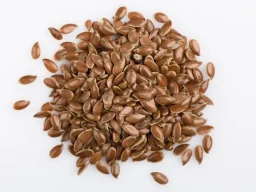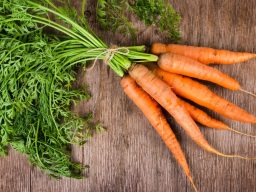
New To Raw Feeding
First of all.....pat yourself on the back that you're doing a great thing for your dog by offering them a great diet that you can customise to THEM.
Second of all......some people can make raw feeding sound REALLY complicated (you guys know who you are *stern face*). Please don't let this put you off
Honestly, its really not as complicated, confusing or daunting to feed raw as it may seem at first. But, you need to have a little idea about what you are feeding to get an idea of a balanced diet - key words here BALANCED DIET
There are alot of great quality complete meals out there now that are already made up and you simply thaw & serve - this is the easiest and most popular choice and there is a brand to suit every budget. Complete meals average of 80% meat, 10% bone and 10% offal - also referred to as 80:10:10 (you may see this on the packaging/wording etc)
Complete meals may not agree with everyone and this is where DIY raw comes in - this is where you make up the meals yourself and you know exactly what your dog is eating. This would mean 80% is meat (this includes heart as its classed as muscle). 10% would be bone, and 10% would be made up of offal (which needs to be always 5% liver and 5% of either spleen, kidney, testicles or pancreas)
The Golden Rules of Raw Feeding:
1. Research
Just a little bit of reading can give you an idea of what you need to do with this diet. Join some of the Raw Feeding groups on Facebook is a good start - but I will say this, there are lots of different ways to feed raw, so don't feel overwhelmed or disheartened if you start looking into it and go..."information overload, I'm not sure how to start" - scroll further down and I've got handy feeding guides to start off for both puppies & new starters. The raw diet is called a number of things - BARF Diet, prey model feeding etc but they're all raw feeding
2. Variety of Proteins = Balanced Diet
The key words again and the main objective here. Variety is the spice of life....aim for at least 4-5 different proteins (turkey, chicken, lamb etc that is what we mean when you hear the word proteins) the more the better. This also includes ALL different parts of the animals, as there are many different nutrients, vitamins, Amino Acids etc contained in different meats and different parts - the more you include, the larger the net you are casting to gain a lovely, all round well balanced diet. Think of it this way - look at ourselves for an example, if we just ate one particular thing and nothing else....we would become deficient in something......the same goes for our fur friends. This is also a good place to mention allergies to meat - this is something I am seeing more and more over the years, if you suspect your pet may have allergies to certain proteins give me a message as we can talk about an elimination diet
3. Aim for Balance Over Time
The ultimate goal in raw feeding is to aim to get a balance of all the necessary nutrients, vitamins & amino acids over a period of time....weeks.....it doesn't need to be achieved over days or in every meal - our fur friends are designed differently to us!
4. Weight
You will need to have an idea of how much your pet weighs as you'll be working out how much to feed. A good place to start is 2 – 3% of the body weight of an adult dog (don't worry - I've included a handy formula to work this out further down!) This can be split over 2 meals. Remember these are guidelines - all dogs are individuals and they are different to each other - also take into account activity levels. If they are very active, they'll burn through more calories so will need to be fed more. Keep an eye on their body condition - with a healthy dog you will be able to feel the ribs (not see them) and they will have a waist when you look from above. You can slightly increase/decrease the amount by keeping an eye on your dogs weight
What is a Raw Diet?
You'll hear many terms used - raw feeding, BARF diet (Biologically Appropriate Raw Food), whole prey feeding, DIY feeding, meat, bones, offal.....lots!
The idea behind the raw diet is that it closely resembles the diet of wolves, of which all dogs descend from. It includes, meat, bone, offal and (depending on personal preference) vegetable, seeds, herbs etc (but surely wolves didn't eat these in the wild I hear you say - in this day and age there is ALOT of evidence of the power of adding these to the diet, and many choose to do so to add a boost of goodness. A raw diet, free from artificial fillers/ grains that are often put into dry kibble or wet pet food, helps to compliment how the dog is built to cope with food too:
Canines
Look at the jaw & teeth of your dog....pretty pointy and designed for tearing and crunching. The jaw itself is designed to go up and down (no side to side movement like a herbivore that needs to grind matter between the teeth to start the breaking down process that is continued further in the gut), with immense crushing power between those jaws.
Shorter Intestines
Wolves have evolved with a shorter intestine compared to herbivores, as the diet they consume (meat) easily digests, and they also have digestive enzymes designed to break down this diet and absorb the necessary nutrients. Herbivores on the other hand, have a longer intestine as they need to allow their food to pass through slowly, to break down easier (as plant matter is harder to digest) and then making it easier to absorb through the gut.
What is Included in a Raw Diet?
Fresh meat, raw meaty bones, and offal but at different amounts to get an overall well balanced diet, often referred to as 'ratios'.
The most popular ratio to feed is 80:10:10 and what we often refer to as a complete meal (you'll see this alot on raw food packaging, or similar). Basically means 80% meat, 10% bone, 10% offal (this is broken down into 5% Liver and 5% secreting organ...such as kidney, spleen etc). The majority of dogs do well on this and there are many raw food brands offering completely balanced meals in this ratio, ready ro go, but you can DIY and make these ratios into meals yourself - takes a little more effort and time, but can often be cheaper and you get to be in charge of what they are eating.
Examples of Meat/Muscle for the 80%:
Green Tripe
Heart (but no more than 20% in the overall diet, remember balance)
Meaty trim/ offcuts / chunks
Tongue / cheek
Gizzards
Tracheas
Breast / fillets
Examples of Bone for the 10%:
Chicken, Duck, Turkey Wings
Carcasses / backs
Necks
Ribs
Chicken & duck feet
NO WEIGHT BEARING BONES - as in legs of cows, sheep etc...the bones are thicker, and more likely to break a tooth!
Examples of Offal for the 10%
Liver - always needs to be 5% in the diet
Other secreting offal to include in the other 5% are:
Spleen
Kidney
Pancreas
Brain
Testicles
Dont Forget the Fish & Eggs!
Thats right!
Fresh oily fish full of healthy Omega fats - go for Sprats, Sardines, Mackeral. Add to a meal (whole or chopped up) twice a week or use a fish complete meal
Eggs - raw eggs, shell, yolk and all! A raw egg, twice a week is again like an extra little tonic on top of the diet. You can either crack the egg and mix it all up (some dogs are not keen on the egg shell, so can always try without)
Thats the Meat Part, What About Vegetables/ Herbs / Seeds/ Nuts?
Bottom line - its down to your own personal preference if you want to add vegetables, herbs and seeds to the diet - you don't have to as by covering all of the above variety of meat & ratios into the diet, it offers a wider choice of nutrients to be absorbed and bingo, a well balanced diet.
The idea of adding vegetables and 'superfoods' is to add a boost to what is already a great diet - there are many benefits from certain veg (spinach for example, full of iron) and herbs that help and support the immune system. Some dogs appreciate these added bonuses, while others do not like the taste of veg! There are plenty of raw dog food brands that offer both a 'meat based' and 'vegetables & superfoods based' complete meals - your dog will let you know which one they prefer! Remember, if you are going down the DIY route to always check what vegetables, herbs, seeds and nuts are safe for your dog to eat before adding them
This is also a good time to mention that if your dog has a problem with yeast, adding vegetables may not be a good idea as it can 'feed' the yeast problem - veg like carrots can be a problem with this







